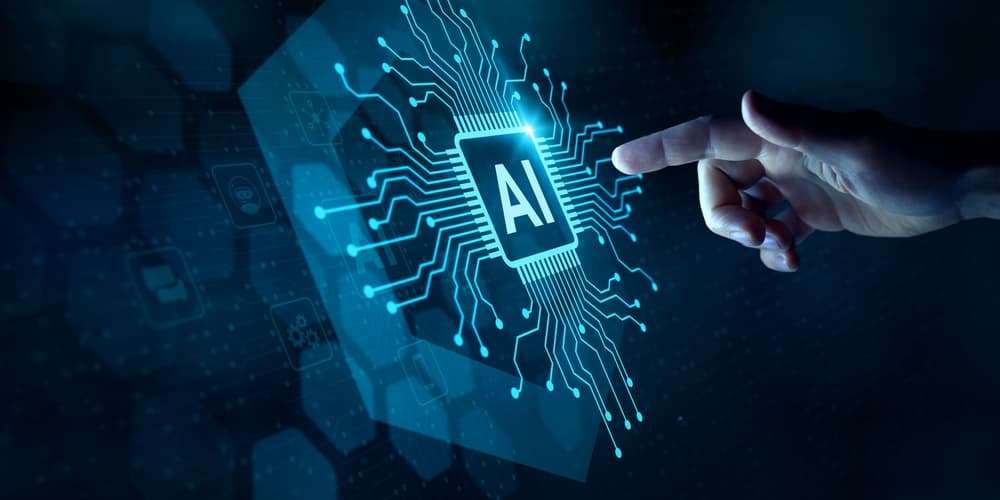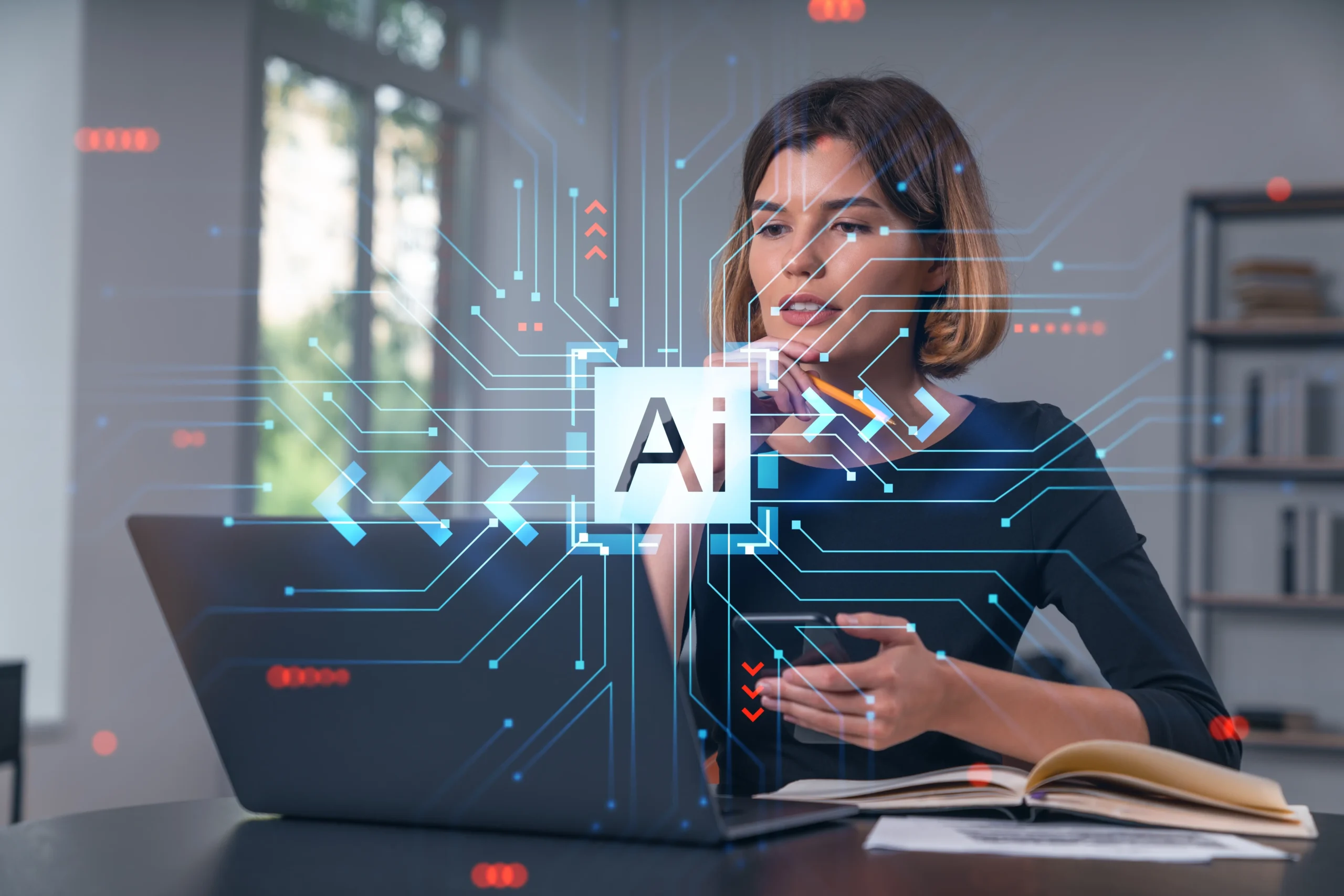Artificial Intelligence (AI) has emerged as a driving force behind digital transformation, and its presence has become increasingly pervasive in our daily lives. From machine learning to computer vision and beyond.
Artificial intelligence focuses on creating systems that can perform tasks that normally require human intelligence. This includes learning from experience, recognizing patterns, understanding natural language and making decisions.
Machine learning is a key branch of artificial intelligence, here, machines have the ability to learn from data and improve their performance with experience. Machine learning algorithms such as linear regression, support vector machines and neural networks are at the heart of many artificial intelligence applications.
Fields of Artificial Intelligence
Machine Learning
Machine learning covers a wide range of applications. From recommendation engines on streaming platforms to personalizing ads on social networks, this branch of AI has transformed the way we interact with technology. Classification and regression algorithms drive automated decision making, continually improving as they are exposed to more data.
The pervasiveness of machine learning manifests itself in a variety of applications. From recommendation engines on streaming platforms to virtual assistants, this approach to artificial intelligence has imperceptibly found its way into our day-to-day lives. Personalizing the user experience in online services, such as anticipating preferences on streaming platforms, is a testament to the power of machine learning.
Models and algorithms in machine learning
Within the vast field of machine learning, we find a variety of models and algorithms that drive artificial intelligence. Machines learn through exposure to data sets, and choosing the right algorithm is essential to the success of the process.
- Linear regression: A fundamental model that finds the linear relationship between variables. In the context of Machine Learning, it is used to predict continuous values, such as stock prices.
- Support Vector Machines (SVM): This algorithm is effective in classification and regression problems. It is used to separate data into categories, being useful in the identification of patterns in complex information sets.
- Neural Networks: Inspired by the structure of the human brain, neural networks are considerable in Deep Learning. This approach mimics the brain’s ability to learn and adapt, being especially effective in image and speech recognition tasks.
Deep learning and artificial intelligence
Deep Learning is an advanced branch of Machine Learning that has gained prominence. It involves the use of deep neural networks with multiple layers to process and learn more complex patterns. This approach has driven significant advances in computer vision, natural language processing and other areas, establishing itself as an essential pillar in the evolution of artificial intelligence.
The key role in digital transformation
The key to machine learning lies in its ability to analyze large amounts of data and extract valuable information. In the era of digital transformation, where information is an invaluable resource, machine learning becomes a crucial enabler. From business decision making to the improvement of products and services, its impact is evident in various sectors.

Intelligent robotics: where artificial intelligence drives the mechanical revolution
Intelligent Robotics goes beyond simple automation. Instead of following rigidly programmed instructions, intelligent robots have the ability to adapt and learn from their environment. Artificial intelligence is the engine that allows these robots to process information, make decisions and adjust their behavior in real time.
The intersection of artificial intelligence and robotics
At the heart of Intelligent Robotics lies the ability of robots to learn and improve over time. This is achieved through machine learning algorithms that enable robots to analyze data, identify patterns and adjust their behavior accordingly. Artificial intelligence here is not just limited to the execution of mechanical tasks, but empowers robots to make informed decisions based on the information they gather.
Practical applications in industry and beyond
Intelligent Robotics has practical applications in a variety of sectors. In industrial environments, intelligent robots can optimize manufacturing by automatically adjusting their processes according to changing conditions. In medical care, robots can perform precise surgeries with minimal supervision, thanks to artificial intelligence that allows them to adapt to each patient’s unique anatomy.
The central role of artificial intelligence
Artificial intelligence is essential in Intelligent Robotics for several reasons. First, it enables advanced perception, allowing robots to process sensory data in a similar way to how humans do. This translates into a greater ability to understand and navigate complex environments.
Second, artificial intelligence enables autonomous decision making. Robots can assess situations, anticipate changes and make informed decisions on how to proceed. This is especially valuable in dynamic environments where conditions can change rapidly.
Continuous learning and adaptability
The ability to learn from experience is another area where artificial intelligence excels in Intelligent Robotics. Robots can adjust their algorithms and behaviors based on the feedback they receive, allowing them to improve over time. This leads to exceptional adaptability, where robots can face new challenges and adjust their strategies accordingly.
Ethical challenges and considerations
While Intelligent Robotics promises significant advances, it also raises challenges and ethical considerations. The autonomy of robots and their ability to make decisions raise questions about liability in case of errors. Safety is also a concern as robots interact more closely with human environments.
Computer Vision
Computer vision empowers machines to visually interpret and understand the world. From object detection to facial recognition, this discipline has found applications in a variety of industries. Autonomous vehicles rely heavily on computer vision systems to safely navigate complex environments.
Natural Language Processing (NLP)
Natural language processing allows machines to understand and generate human language. Virtual assistants such as Siri and Alexa are examples of how artificial intelligence has transformed human-machine interaction. In addition, PLN is used in machine translation, sentiment analysis and chatbots.
Intelligent Robotics
Intelligent robotics combines artificial intelligence with robotics to create machines that can perform complex tasks and adapt to changing environments. From robots in factories to medical assistants, this application of artificial intelligence is redefining automation.

Practical applications of artificial intelligence
Health and Medicine
In the healthcare field, artificial intelligence has revolutionized medical diagnostics. Deep learning algorithms analyze medical images to accurately detect disease. In addition, drug research has been accelerated by the ability of artificial intelligence to analyze vast data sets.
Finance and banking
In the financial sector, artificial intelligence has become indispensable for market prediction and fraud prevention. Advanced algorithms can analyze financial patterns and detect anomalies, ensuring secure transactions.
Retail and e-commerce
Personalization driven by artificial intelligence has transformed the shopping experience in retail and e-commerce. From product recommendations to supply chain optimization, artificial intelligence drives efficiency and improves customer satisfaction.
Education
In education, artificial intelligence facilitates the personalization of learning. Virtual tutoring and automated assessment systems allow education to be tailored to the individual needs of students.
Artificial intelligence has established itself as a driving force in various fields and applications, radically transforming our everyday reality. Artificial intelligence has made a profound mark in areas ranging from healthcare to manufacturing, and its influence continues to expand.
One of the most prominent fields is healthcare, where artificial intelligence has revolutionized diagnosis and treatment. Machine learning systems analyze large medical data sets, enabling early identification of diseases and personalizing treatment plans. The ability of artificial intelligence to process information at unparalleled speed has improved efficiency and accuracy in the healthcare sector.
In industry, automation driven by artificial intelligence has redefined manufacturing processes. From supply chain optimization to product quality, machine learning algorithms enable companies to improve efficiency and reduce costs. Artificial intelligence has the ability of machines to learn autonomously and adapt to changing environments.
The fields of robotics and automation have undergone a revolution thanks to artificial intelligence. From industrial robots that perform precise tasks to virtual assistants that simplify our daily lives, artificial intelligence has enabled the creation of intelligent machines capable of understanding and responding to their environment. This not only improves productivity, but also creates new job possibilities and opportunities.
Artificial intelligence has also found significant applications in the financial arena, where machine learning algorithms analyze financial data patterns to make informed business decisions. Predicting market trends and risk management are just a few examples of how artificial intelligence has revolutionized decision making in this sector.
The education sector has also been impacted by artificial intelligence, with virtual tutoring systems and personalized learning platforms. These applications allow for a more adaptive educational approach, catering to the individual needs of students.
Artificial intelligence has transcended the limits of human imagination, leaving an indelible mark in fields ranging from healthcare to finance. Their ability to learn, adapt and make decisions has paved the way for a future where collaboration between humans and artificial intelligence continually redefines our experience in the modern world.



